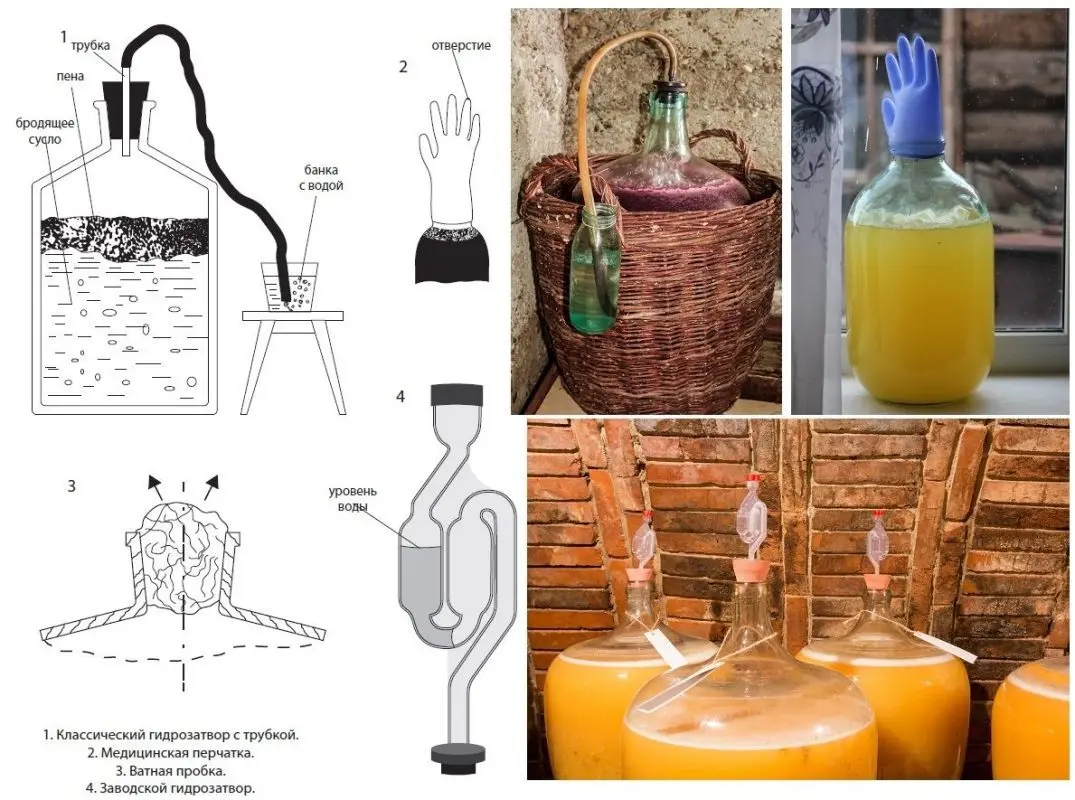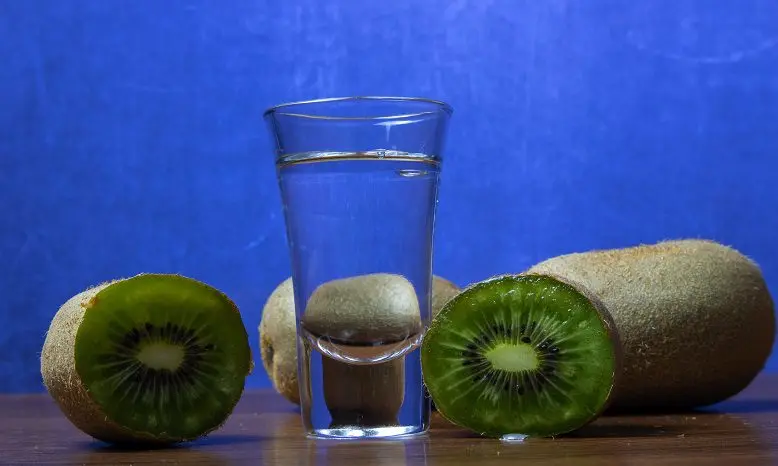For the preparation of moonshine, you can use substandard kiwi fruit, which are no longer suitable for sale. It is important to remove the rotten and moldy parts of the pulp. The result is a drink with a light kiwi flavor and a soft berry aftertaste.
Theory
Kiwi fruits contain up to 9% sugar, which means that from 1 kg of raw materials you can get a maximum of 108 ml of moonshine with a strength of 40%, in practice the real yield will be 10-15% lower. To increase the amount of the drink, you can add beet sugar to the mash – 1 kg additionally gives 1,1-1,2 liters of forty-degree distillate, however, levels out part of the aroma and taste of kiwi. Therefore, it is important to find the optimal balance between the quantity and quality of moonshine. It has been experimentally established that the optimal amount of sugar is a maximum of 1 kg per 5 kg of fruit.
Kiwi pulp does not contain wild yeast, so you will have to make a sourdough or add artificial yeast: baker’s, alcohol or wine. Yeast from sourdough and wine roam for a long time (up to 50 days), but do not affect the aroma and taste of moonshine. On alcohol and baker’s yeast, kiwi mash will be ready in 3-10 days, but the organoleptic of the drink may deteriorate, therefore, all other things being equal, it is better to use sourdough or store-bought wine yeast.
Ingredients:
- kiwi fruits – 5 kg;
- sugar – 0,5-1 kg (optional);
- water – 1 liter (and another 4 liters for each kilogram of sugar);
- yeast – 5 grams dry (20 grams pressed) or wine (sourdough) per 5 liters of must.
Kiwi brew recipe
1. Peel the fruits, crush the pulp without rot, signs of spoilage and mold with your hands, trying not to damage the bones.
2. Place the pulp in a fermentation container, add water and sugar. Add yeast or sourdough. Mix until smooth. Fill the container to a maximum of 75% of the volume so that there is room for foam. Install a water seal of any design (even a glove with a hole in one of the fingers will do).
3. Move the mash to a dark place (cover with a thick cloth) with a temperature of 20-28 °C. Depending on the yeast used and the temperature, the kiwi mash ferments from 3 to 50 days. The readiness is indicated by the absence of gas from the water seal (the glove was blown away), the mash is not sweet in taste, it has become lighter, a layer of sediment has fallen at the bottom.

Obtaining moonshine from kiwi
4. Drain the washed mash from the sediment, then filter through several layers of gauze to remove the remnants of the pulp, which can burn when heated.
5. Drive the mash for the first time at maximum speed without separation into fractions. Finish collecting the product when the strength in the stream falls below 20%.
6. Determine the strength of the resulting distillate. Calculate the amount of pure alcohol (volume in liters multiplied by the strength in percent and divided by 100).
7. Dilute moonshine with water to 18-20%, then make a second distillation. The first 10-12% of the yield from the amount of pure alcohol is collected separately and poured. This upper fraction is called “head”, it contains harmful substances and can only be used for technical purposes.
8. Select the main part of moonshine from kiwi (“body”) until the strength in the stream drops below 45%. Then finish the distillation or collect the final fraction (“tail”) separately.
9. Dilute the finished moonshine (“body”) with water up to 40-45%, pour into glass containers, seal tightly. Leave the drink in a dark, cool place to stabilize the taste after mixing with water.










